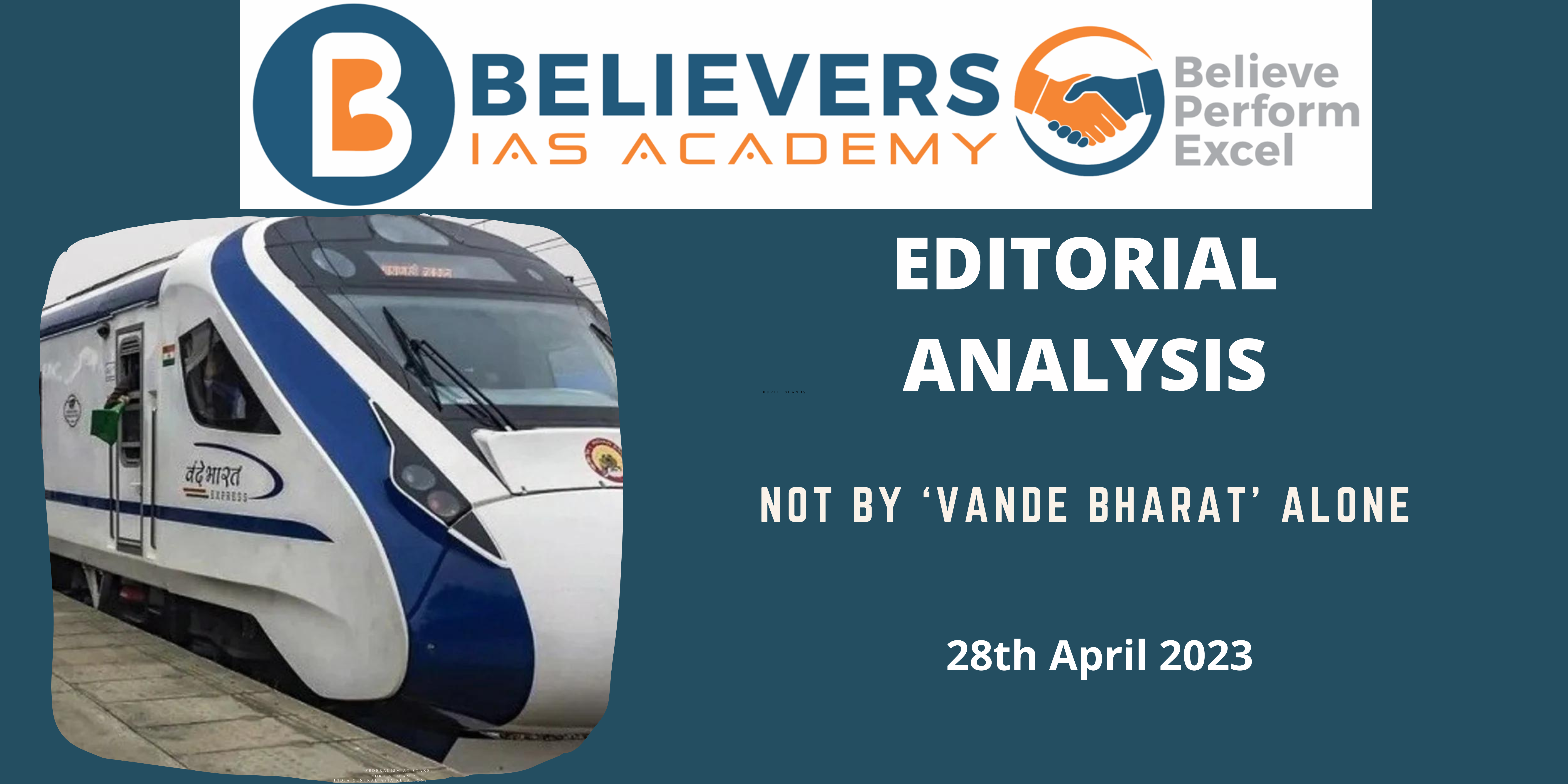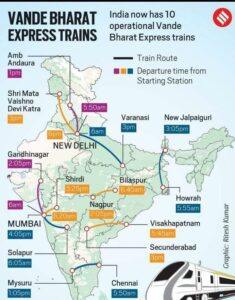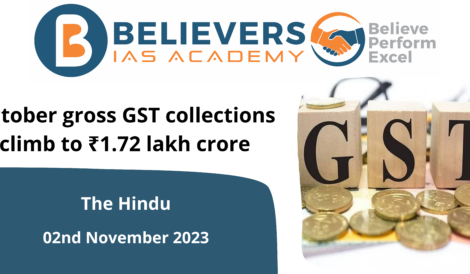Not By ‘Vande Bharat’ Alone
Context:
There is a cruel irony in the fact that most of the news about Indian Railways today is about Vande Bharat trains, and more specifically, that every new Vande Bharat train is personally signed off by the Prime Minister. For, a little more than four years ago, the launch of Train 18, the forerunner to the Vande Bharat train, was preceded by the opening of vigilance investigations against some of the project’s top architects on wholly speculative grounds.
Points to Ponder:
- The article acknowledges the success of the Vande Bharat trains but cautions readers not to lose sight of the major difficulties plaguing Indian Railways.
- The abolition of a distinct Railway Budget and its merging with the General Budget has resulted in increased financial support and institutional borrowings to boost rail transport capacity.
- While unprecedented levels of investment in rail infrastructure are welcome, the Indian Railways’ performance should be measured using more relevant metrics.
- The essay identifies two categories for consideration: freight and passenger transportation.
- The National Rail Plan 2030 intends to increase rail’s freight traffic share relative to automobiles from 27% to 45% by 2050, increase the average speed of goods trains, and cut freight tariff rates by up to 30%. However, the rail share of freight carried has decreased from 51.5% in 2008-09 to 32.4% in 2018-19 for leads greater than 300 kilometres, and there is no evidence of higher levels of traffic being achieved concurrently with commodity diversification or an increase in rail share relative to road transport.
- On the passenger side, punctuality is considered as the most essential operational index, and the Indian Railways is urged to strive for worldwide punctuality norms.
- The article proposes developing a timeliness index that will reflect punctuality at selected intermediate stops for all mail/express trains.
- Financial performance, physical performance, safety, organizational/human resource issues, project execution, customer relations, and the effect of dedicated goods corridors on Indian Railways system capacity are all issues that must be critically analysed and reviewed.
- The article suggests that an annual report on railway performance be tabled in Parliament, similar to the yearly Economic Survey published by the Finance Ministry ahead of the General Budget, to serve as an internal performance audit.
Vande Bharat express
- India’s first indigenous semi-high-speed train debuted in February 2019.The train has the capability to reach a top speed of 160 km/h.
- The Integral Coach Factory (ICF) in Chennai designed and produced it in-house in order to provide customers with a fresh travel experience with improved facilities and services.
- Upgrading maintenance technologies and processes, improving the productivity and performance of all railway assets and personnel, and improving reliability, availability, utilisation, and efficiency are all objectives.
Vande Bharat 2.0
- Vande Bharat Express’s new avatar will debut in September 2022. It has more advanced features than its predecessor.
- The train can reach a top speed of 180 kilometres per hour. It Weighs 392 tonnes as opposed to 430 tonnes previously.
- The train is equipped with enhanced safety features such as the KAVACH (Train Collision Avoidance System), greater security, and improved fire safety measures.
- Passengers will benefit from improved amenities such as improved riding comfort, larger LCD TVs, a passenger information and communication system, more energy-efficient ACs, side recliner seat capability, bio vacuum toilets with touch-free amenities and wifi content on demand.
- Other improvements include improved heat ventilation and air conditioning control, improved floodproofing, superior traction motor ventilation, and improved acceleration and deceleration.
- Overall, a step towards the Indian Railways’ goal of providing passengers with an efficient, reliable, and comfortable travel experience, and an outstanding example of the success of the ‘Make in India’ programme.





